
Where were you when the first Synthplex happened? I was in myself doing my best to explore my bucket of impostor syndrome. There are those moments you just know that nobody is looking at you, as with one glance they know you can’t be a serious human being because they don’t recognize you; so you must be nobody. I’d heard that Martin Gore had visited on Friday and a gaggle of fans followed him around hoping for selfies with the Depeche Mode star. Others who were recognizable were also given the red carpet welcome. When someone like myself walks up there is the obligatory name tag check and as soon as it is clear that there is no name recognition the person at the booth can start acting fidgety with you in order to let you know your time is limited and that you are likely wasting theirs. Now step back and wait for someone that impresses them. The smiles grow, they move in closer and start putting on the charm. There are no time limits as the momentary celebrity can indulge their every curiosity with answers extending into detailed nuances I could never even pay for.
I am not endeared to these vendors. Matter of fact, I’d now like to sell the gear I bought from them over the previous years. This type of elitism is a punch at my enthusiasm and the fire that stokes my sense of owning the aforementioned impostor syndrome. Some vendors are extraordinary in their lack of bias and embrace anyone regardless of status who approaches them. This weekend I was able to experience and witness the gracious attitudes of a number of makers such as the authors of Patch and Tweak – Kim Bjørn and Chris Meyer. Bert Schiettecatte and Celine Van Damme of Percussa were incredibly welcoming and willing to share a ton of information that made me a fan of their Percussa SSP. Dave Rossum has the enthusiasm of 10 people, Danjel van Tijn founder of Intellijel didn’t hesitate to pay attention as we spoke. Scott Jaeger of Industrial Music Electronics will give anyone who asks him about his modules a brilliant hands-on demo and answer all questions, often in exquisite detail with a dose of history thrown in.
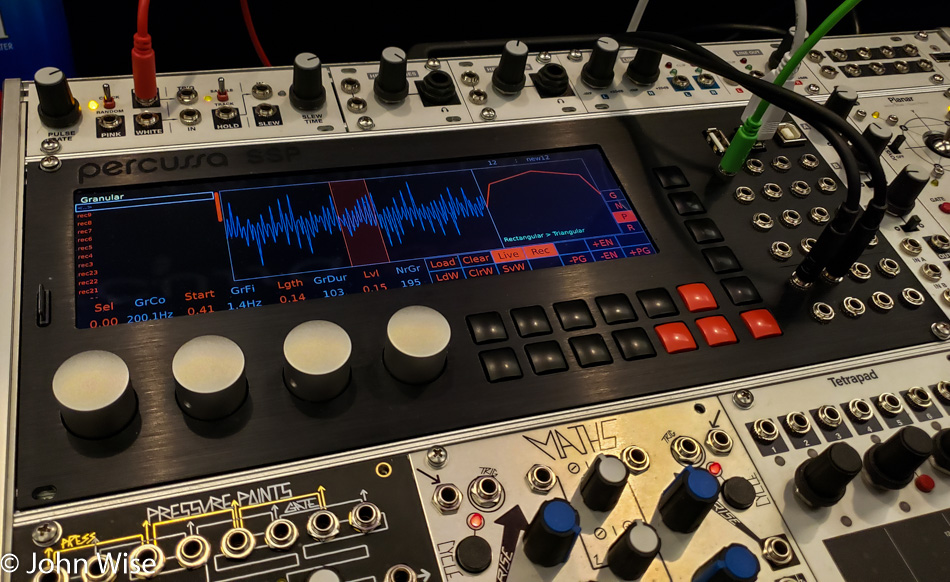
Speaking of the Percussa SSP: Once I was finally able to catch Bert free of giving other demos he jumped right in sharing with me the salient points that I was most curious about. First up were the granular capabilities of this expensive power-hungry module. When I say expensive I’m talking $2,000 pricey, and regarding power, this thing needs nearly 1 amp of electricity from your rack. Beyond those requirements, this thing is a beast. Do you need to record up to 16 inputs of either audio or control voltage? This is your machine. Do you want to record and edit samples directly in your Eurorack and then drill into them with polyphonic multi-channel playback only to record those outs right back to the device for later use? The SSP can do that.
I’ll admit I was skeptical a couple of years ago when Percussa ran their Kickstarter about this ambitious project, but after seeing it first hand I’m intrigued. With software and firmware updates occurring approximately twice monthly and upon learning that their forum is a great place for feedback and making requests for improvements, I inch even closer to trying to figure out what to sell in order to bring this work of art into my repertoire.
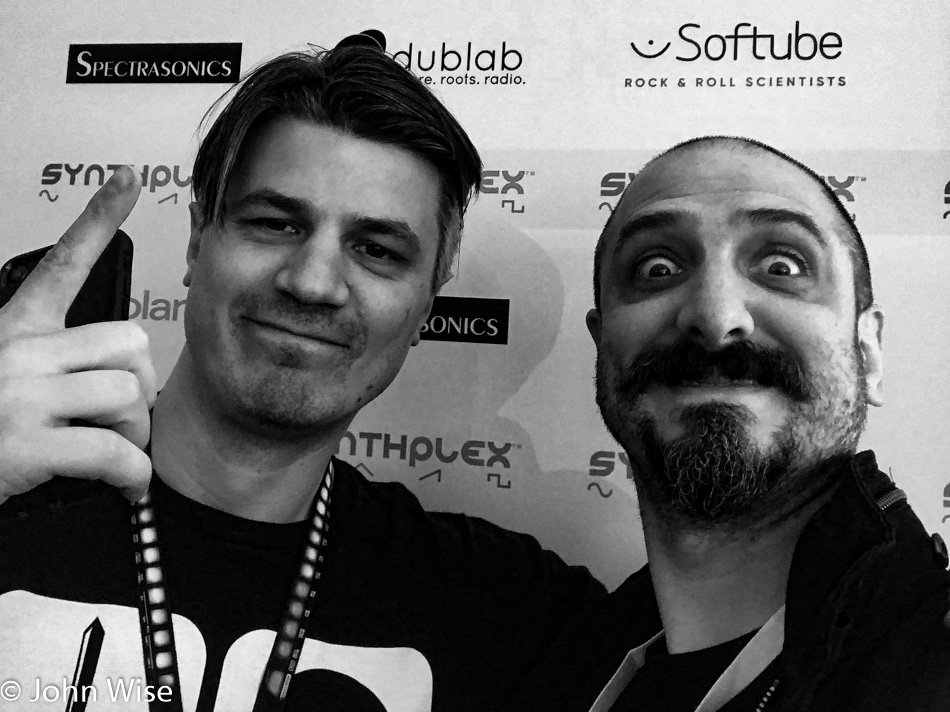
How cool is this? Not only do I run into fellow Phoenician Chris Randall here in California, but here is Ed Kennedy who runs the Phoenix Synthesizers Group (organizing a DIY program in Phoenix soon) and the maniacal A.m. Filipkowski of Data Cult Audio who is also based in Arizona (FYI: he’s not really maniacal, he just looks that way – yes that’s him on the right).
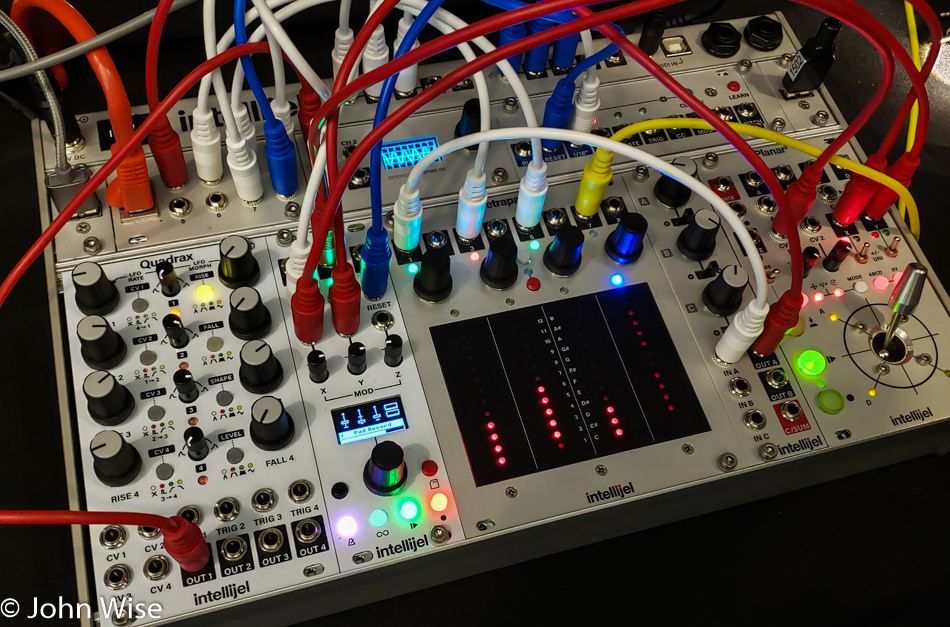
Danjel van Tijn seriously impressed me, not with the sexy new case so much as with the device I failed to get a name for that is mounted left of the Tetrapad. That shiny white module is brand new and unreleased as of today. It is a CV recorder for the Tetrapad. I wish I’d thought to ask while I had his attention if the voltages could be morphed across the various channels.
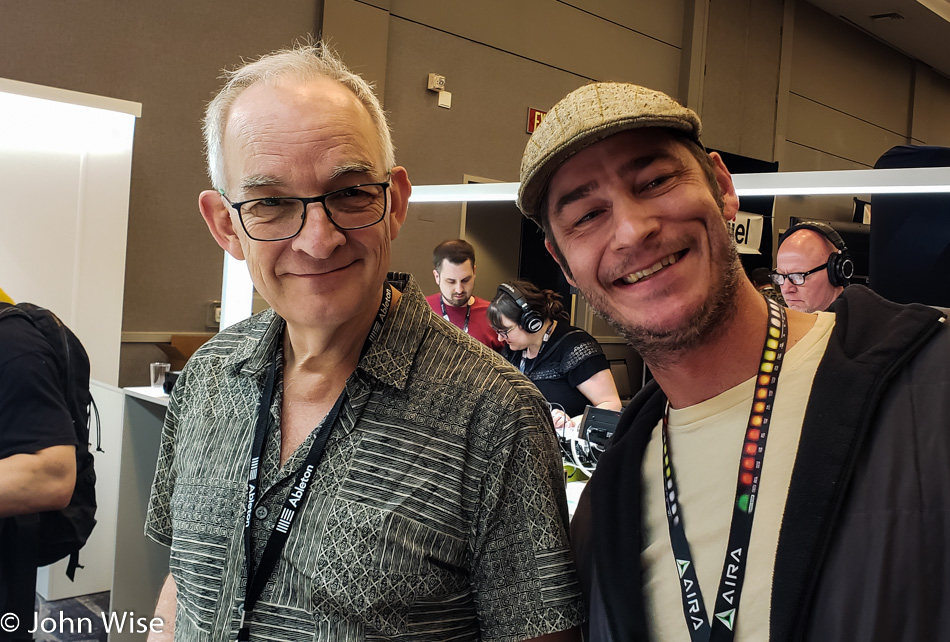
On the left is the affable and relatively famous Roger Linn who invented the first drum machine to use samples and the MPC that profoundly changed modern music. On his right is my old friend Daniel Billotte who was getting a demo of Roger’s newest creation; the Linnstrument. Most recently Roger played a crucial role in helping change the MIDI format to incorporate polyphonic elements that radically extended the play-ability of MIDI instruments.
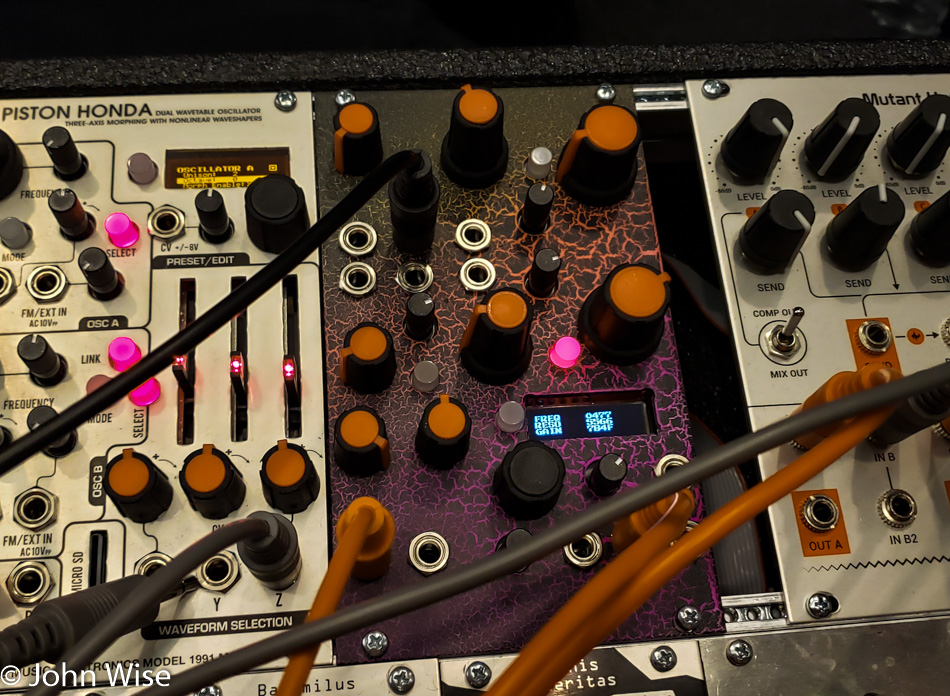
This was one of the main draws for me showing up at Synthplex; the Bionic Lester MK3. Scott Jaeger of Industrial Music Electronics made two of these filters last week and one of them was for me. Sure he could have mailed it to me, but then I would have missed out on all of these terrific experiences and more than a few wonderful people I was able to meet and learn from.